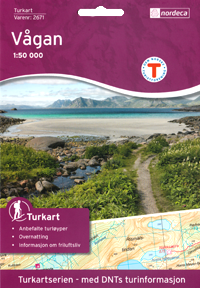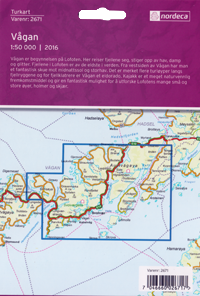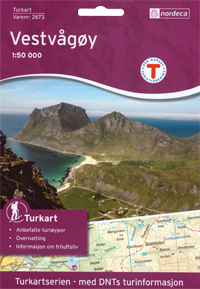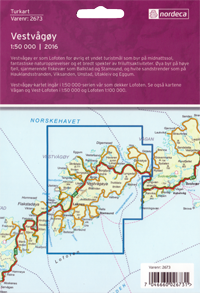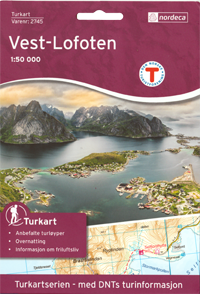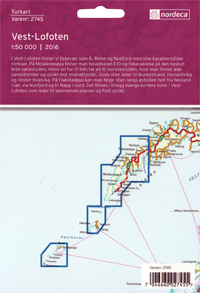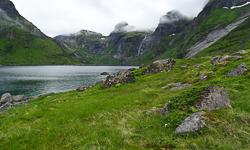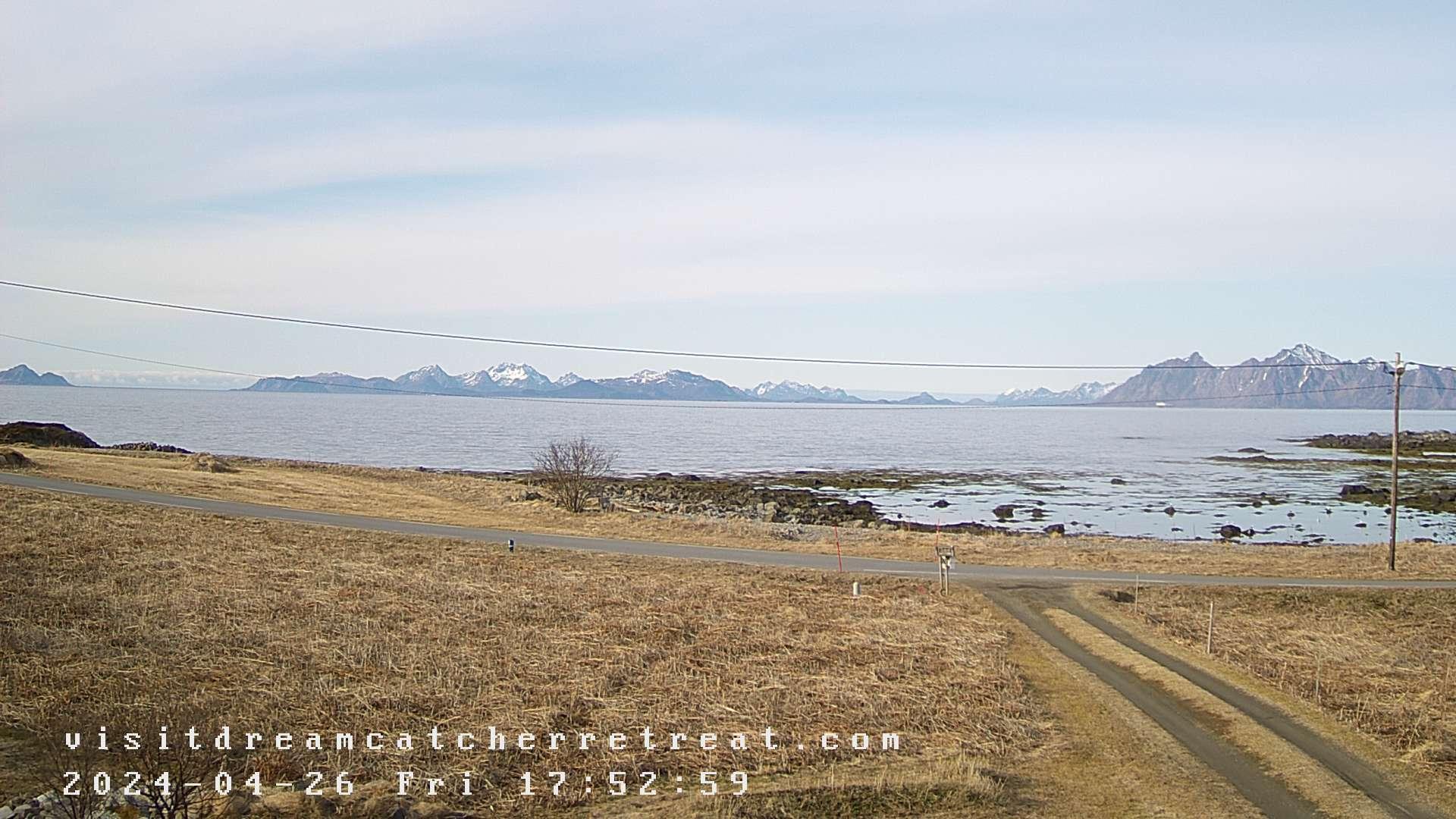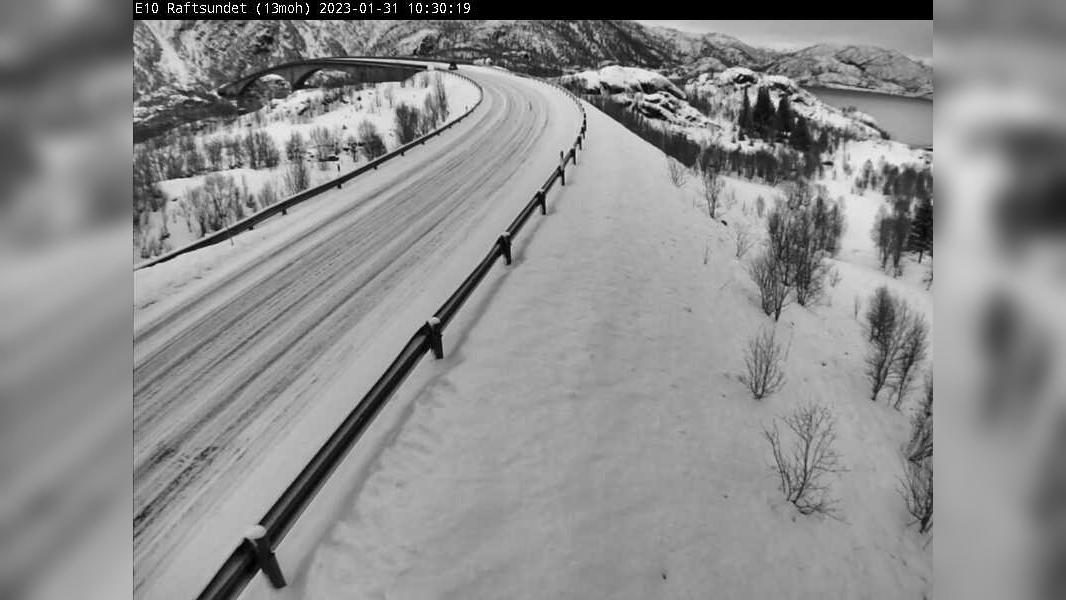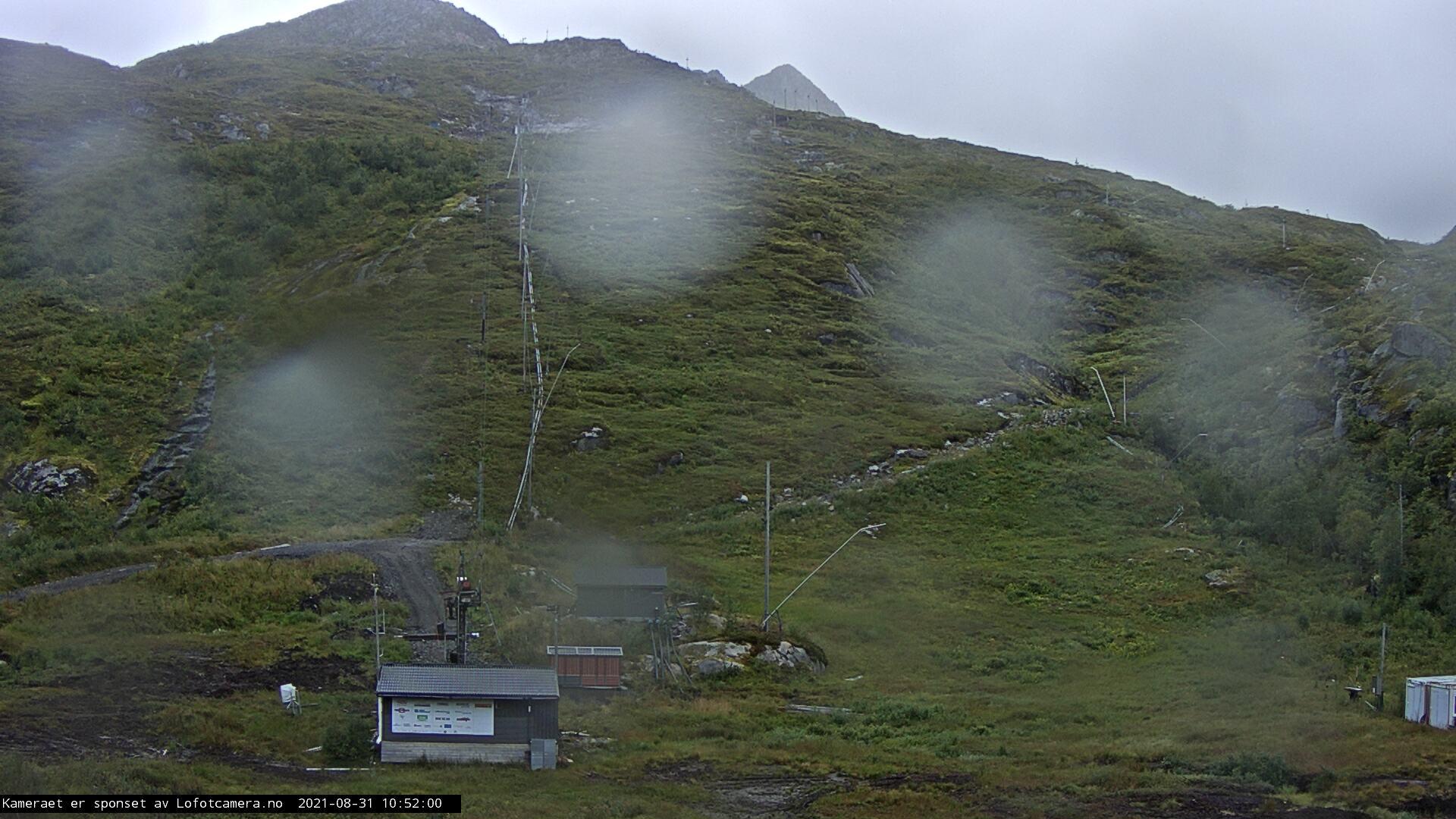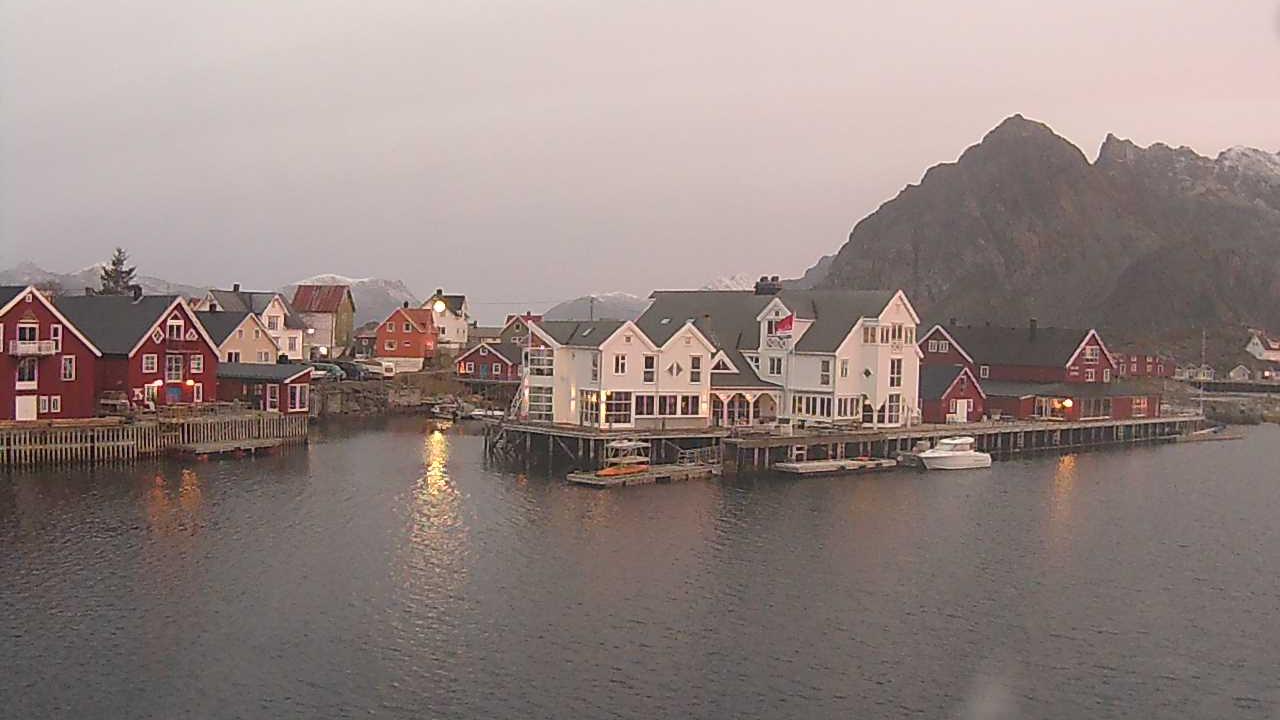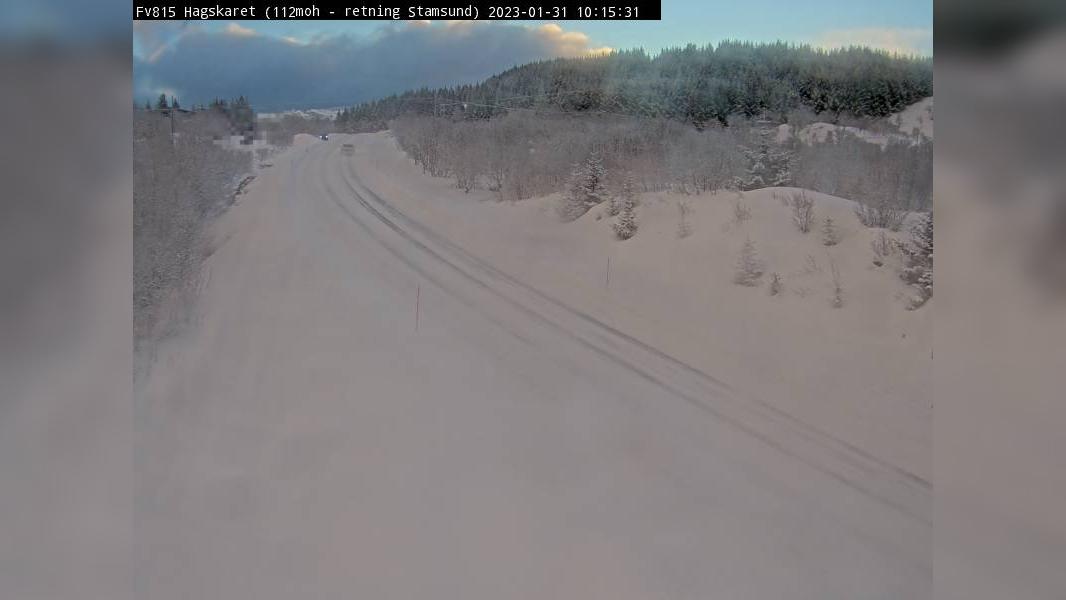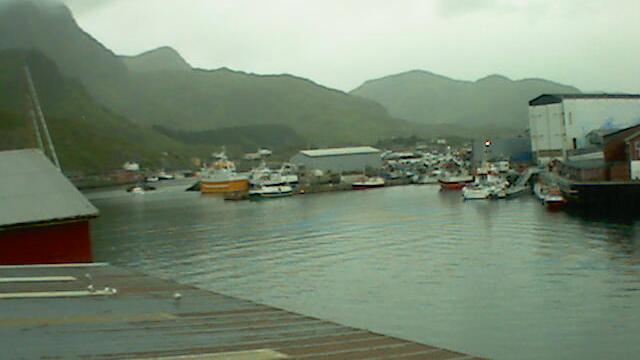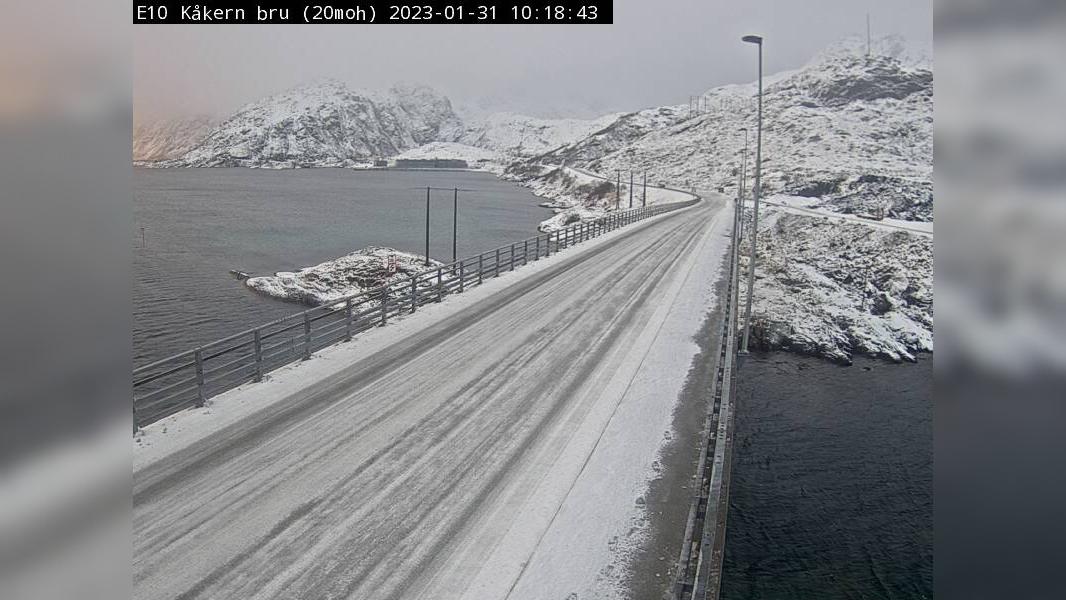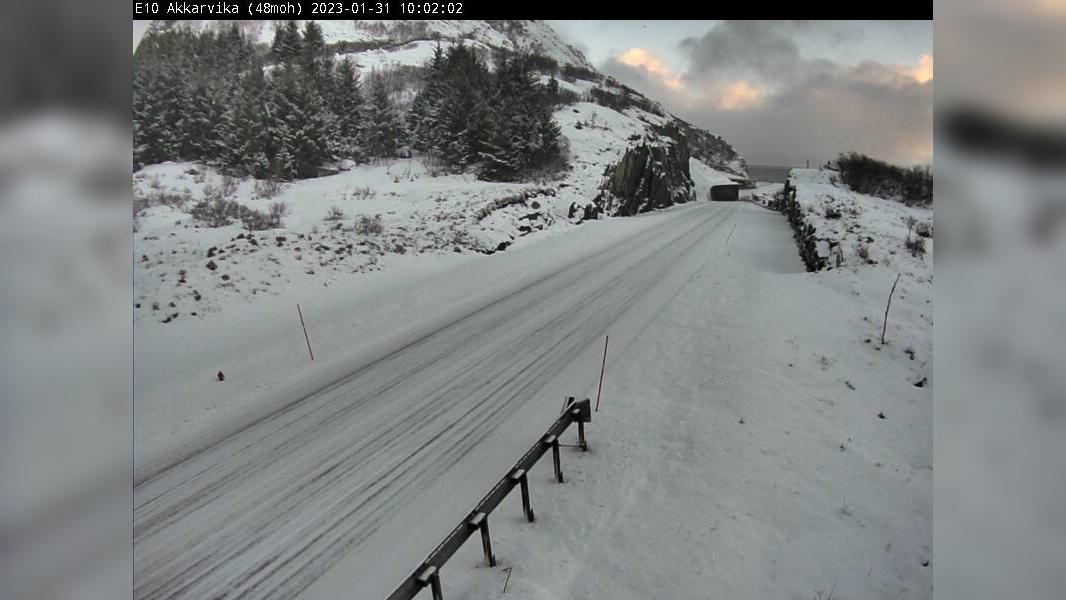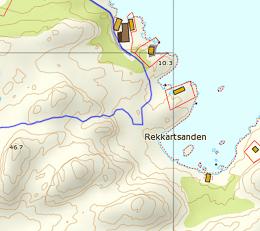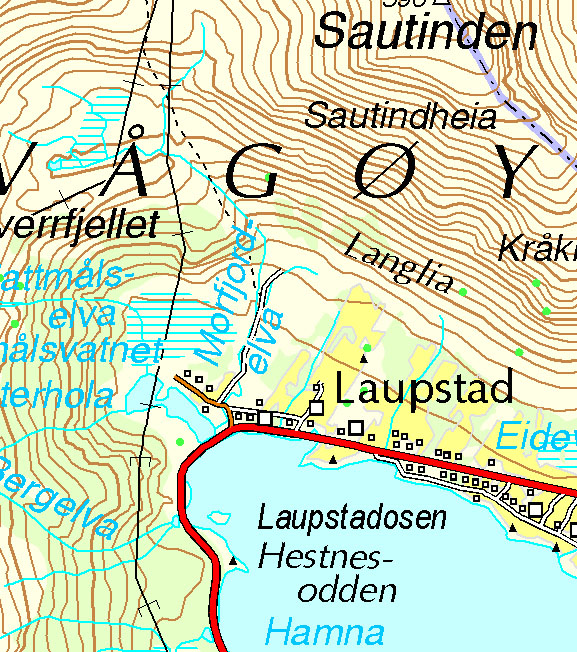| | | hhhhhhhhhhhhhh | | |
| | 8 nouveaux topos de randonnées sont disponibles gratuitement et accessibles pour les utilisateurs enregistrés. Tous les topos que nous proposons sont réalisés par notre équipe, ce qui veut dire que chaque randonnée est préalablement testée et que toutes les informations (tracés gps, indications topographiques, etc.) sont collectés et vérifiés par nous même. | IMAGE 1 | |
Une rubrique consacrée aux Aurores Boréales
C’est maintenant la pleine saison pour observer ce phénomène physique spectaculaire. Nous vous proposons des outils en ligne de prévision des aurores boréales, ainsi qu’une galerie de photos « fraîchement » prise des dernières aurores observées aux Lofoten. Une mini-galerie de photos des Lofoten en hiver ainsi que des actualités locales qui ont attirés notre attention de randonneurs et d’amoureux de la nature arctique et qui vous permettrons sans doute de mieux appréhender l’hiver dans cette région du globe. | IMAGE 2 |
Hiking
8 new hiking guides are available for free and can be accessed by registered users. All the routes we offer have been drawn up by our team, which means that each hike is tested beforehand and we have collected and tested all the information (satnav routes, hiking specifications, etc.). | IMAGE 3 |
Site
A section dedicated to the Northern Lights
This is now the best time of the year to observe this spectacular natural phenomenon. We provide on-line tools for forecasting the Northern Lights, as well as a gallery of recently taken photos of the latest display of Northern Lights in the Lofoten Islands.
A mini-gallery of photos of the Lofoten Islands in the winter and local news that we have spotted as hikers and arctic nature lovers that will give you a better idea of what winter is like in this part of the world. | IMAGE 4 |
| | | |
 I discovered Norway when I was about ten years old. When I was young each main school holiday was the occasion for my family to roam Europe in a Volkswagen Camper, stopping anywhere that took our fancy in interesting places that we often discovered on foot. When I arrived in Norway, even though it was not my first trip abroad I still remember the impression it made on me!
I discovered Norway when I was about ten years old. When I was young each main school holiday was the occasion for my family to roam Europe in a Volkswagen Camper, stopping anywhere that took our fancy in interesting places that we often discovered on foot. When I arrived in Norway, even though it was not my first trip abroad I still remember the impression it made on me!
The dramatic beauty of the landscapes, the power of the elements and the freshness and purity of the air combined to produce an unreal atmosphere which I had thought belonged only to the world of dreams or the imagination…
30 years after my first encounter, having spent years exploring the tracks, mountains and valleys for my own enjoyment, I still find Norway just as fascinating!
Becoming a mountain guide has enabled me to make a living out of my love of Norway. For nearly ten years I have divided my time between France and Norway where I spend six months of the year guiding groups of hikers for the major French hiking agencies and, for some time now, for my own travel agency, exploranor.fr
The purpose of www.rando-lofoten.net is to provide concrete, up-to-date information on the Lofoten islands to help your prepare your trip properly. Seasoned, experienced hikers who prefer to organise their own trip will find hiking suggestions, on this site as well as part of the document database on the Lofoten islands that I have built up in recent years.
The Forum will also enable you to participate directly by sharing your own experiences or asking questions.
David Souyris
Bibliography, maps, useful links ...
The Lofoten archipelago is located above the Arctic Circle, the result of this situation is a period of permanent days in summer and at the opposite a period of permanent night in winter (polar night).
In between those two extreme periods there is a big variation between days and night depending of the season.
To organize properly your trips and expedition in this region, it is important to take this phenomenon into account due to the high latitude (68 ° N ).
We provide you below with a table of hours of sunrise and Sunset over the 12 months of the year.
All datas were collected at Leknes (68.1472 ° N, 13.6114 ° E), in the center of the archipelago, there may be slight variations depending on the point where you stand on the islands.
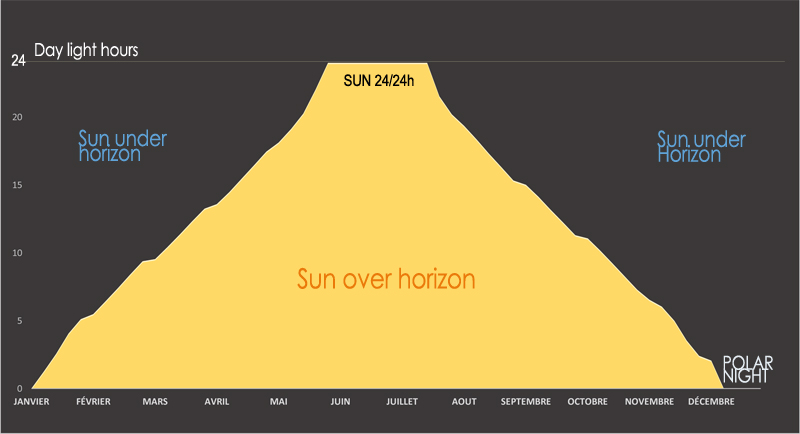
January
| Date | Sunrise | Sunset | Day length |
| 01/01/12 | 1:00 AM | 1:00 AM | 0h 0m 0s |
| 07/01/12 | 11:28 AM | 12h55 PM | 1h 26m 43s |
| 14/01/12 | 10:47 AM | 1:41 PM | 2h 54m 40s |
| 21/01/12 | 10:13 AM | 2:20 PM | 4h 6m 33s |
| 28/01/12 | 9:42 AM | 2:54 PM | 5h 12m 50s |
February
| Date | Sunrise | Sunset | Day length |
| 01/02/12 | 9:24 AM | 3:13 PM | 5h 49m 11s |
| 07/02/12 | 8:58 AM | 3:40 PM | 6h 42m 8s |
| 14/02/12 | 8:28 AM | 4:10 PM | 7h 42m 59s |
| 21/02/12 | 7:59 AM | 4:39 PM | 8h 40m 12s |
| 28/02/12 | 7:29 AM | 5:06 PM | 9h 37m 10s |
March
| Date | Sunrise | Sunset | Day length |
| 01/03/12 | 7:21 AM | 5:14 PM | 9h 53m 15s |
| 07/03/12 | 6:55 AM | 5:36 PM | 10h 41m 9s |
| 14/03/12 | 6:26 AM | 6:02 PM | 11h 36m 33s |
| 21/03/12 | 5:56 AM | 6:28 PM | 12h 31m 46s |
| 28/03/12 | 6:26 AM | 7:53 PM | 13h 26m 51s |
April
| Date | Sunrise | Sunset | Day length |
| 01/04/12 | 6:09 AM | 8:08 PM | 13h 58m 44s |
| 07/04/12 | 5:43 AM | 8:31 PM | 14h 47m 5s |
| 14/04/12 | 5:13 AM | 8:57 PM | 15h 44m 40s |
| 21/04/12 | 4:42 AM | 9:26 PM | 16h 44m 4s |
| 28/04/12 | 4:09 AM | 9:55 PM | 17h 46m 5s |
May
| Date | Sunrise | Sunset | Day length |
| 01/05/12 | 3:55 AM | 10:09 PM | 18h 13m 47s |
| 07/05/13 | 3:26 AM | 10:38 PM | 19h 12m 3s |
| 14/05/13 | 2:47 AM | 11:15 PM | 20h 27m 59s |
| 21/05/13 | 1:58 AM | 12:05 AM | 22h 6m 45s |
| 28/05/13 | 1:00 AM | 1:00 PM | 24h |
June
| Date | Sunrise | Sunset | Day length |
| 01/06/12 | 1:00 AM | 1:00 PM | 24h |
| 07/06/13 | 1:00 AM | 1:00 PM | 24h |
| 14/06/13 | 1:00 AM | 1:00 PM | 24h |
| 21/06/13 | 1:00 AM | 1:00 PM | 24h |
| 28/06/13 | 1:00 AM | 1:00 PM | 24h |
July
| Date | Sunrise | Sunset | Day length |
| 01/07/12 | 1:00 AM | 1:00 PM | 24h |
| 07/07/12 | 1:00 AM | 1:00 PM | 24h |
| 14/07/12 | 1:00 AM | 1:00 PM | 24h |
| 21/07/12 | 2:14 AM | 12:09 AM | 21h 54m 7s |
| 28/07/12 | 3:01 1M | 11:22 PM | 20h 20m 14s |
August
| Date | Sunrise | Sunset | Day length |
| 01/08/12 | 3:23 AM | 11:00 PM | 19h 36m 34s |
| 07/08/12 | 3:52 AM | 10:29 PM | 18h 36m 56s |
| 14/08/12 | 4:23 AM | 9:56 PM | 17h 32m 42s |
| 21/08/12 | 4:52 AM | 9:24 PM | 16h 32m 4s |
| 28/08/12 | 5:19 AM | 8:53 PM | 15h 33m 52s |
September
| Date | Sunrise | Sunset | Day length |
| 01/09/12 | 5:34 AM | 8:36 PM | 15h 1m 25s |
| 07/09/12 | 5:56 AM | 8:10 PM | 14h 13m 32s |
| 14/09/12 | 6:21 AM | 7:40 PM | 13h 18m 30s |
| 21/09/12 | 6:46 AM | 7:10 PM | 12h 23m 59s |
| 28/09/12 | 7:11 AM | 6:40 PM | 11h 29m 35s |
October
| Date | Sunrise | Sunset | Day length |
| 01/10/12 | 7:21 AM | 6:28 PM | 11h 6m 14s |
| 07/10/12 | 7:43 AM | 6:02 PM | 10h 19m 16s |
| 14/10/12 | 8:09 AM | 5:33 PM | 9h 23m 50s |
| 21/10/12 | 8:36 AM | 5:03 PM | 8h 27m 24s |
| 28/10/12 | 8:04 AM | 3:33 PM | 7h 29m 15s |
November
| Date | Sunrise | Sunset | Day length |
| 01/11/12 | 8:21 AM | 3:16 PM | 6h 55m 28s |
| 07/11/12 | 8:47 AM | 2:51 PM | 6h 3m 32s |
| 14/11/12 | 9:19 AM | 2:20 PM | 5h 0m 36s |
| 21/11/12 | 9:54 AM | 1:48 PM | 3h 54m 4s |
| 28/11/12 | 10:33 AM | 1:14 PM | 2h 41m 8s |
December
| Date | Sunrise | Sunset | Day length |
| 01/12/12 | 10:52 AM | 12:57 PM | 2h 5m 42s |
| 07/12/12 | 1:00 AM | 1:00 AM | 0h 0m 0s |
| 14/12/12 | 1:00 AM | 1:00 AM | 0h 0m 0s |
| 21/12/12 | 1:00 AM | 1:00 AM | 0h 0m 0s |
| 28/12/12 | 1:00 AM | 1:00 AM | 0h 0m 0s |
Rorbus are charming fisherman’s huts, often on stilts, but the level of comfort is quite basic. Despite being built on the coast they are the equivalent of our mountain refuges. They are generally equipped with a kitchenette and a communal area and all have toilets, hot showers and electricity to compensate for the climate which can sometimes be harsh at these latitudes. The bedrooms sleep 2 to 8 people, more often than not in bunk beds. In certain places the beds are on small high platforms directly under the roof. Even though the accommodation may be a little basic, it is more than made up for by the beautiful landscapes and the fact that you will spend most of your time hiking in the countryside...
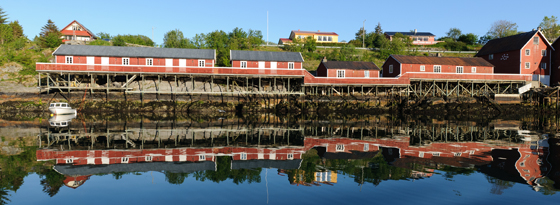
People on a tight budget should know that Norwegian law allows “wild camping” everywhere (certain restrictions apply in national parks). If you decide this is for you, you should try to keep a reasonable distance away from houses. Don’t pitch your tent on farming land that is clearly being worked and has been fenced in; such land is rare and pitching your tent on it could be taken as provocation. If you do want to camp less than 500 metres from a farm or isolated dwellings, use your best English to go and check that nobody minds.
Lastly, try to remember that although Norwegians are not sticklers about private property, they are when it comes to ecology and tidiness. So leave your campsite clean and tidy when you leave!
Here are a few tips that apply everywhere, particularly to the Lofoten Islands, before you go hiking…
Don’t hike alone
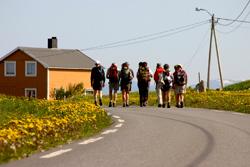 Even though you may love being alone and be in good physical shape, and there is no risk of being kidnapped and held for ransom here, the nature of the terrain, unpredictable weather and limited number of hikers may have dramatic consequences in the event of an accident, however minor (twisted ankle, a fall, etc.). Mobile phones can’t always find a signal and the nights can be cold and damp even in July…
Even though you may love being alone and be in good physical shape, and there is no risk of being kidnapped and held for ransom here, the nature of the terrain, unpredictable weather and limited number of hikers may have dramatic consequences in the event of an accident, however minor (twisted ankle, a fall, etc.). Mobile phones can’t always find a signal and the nights can be cold and damp even in July…
Tell someone where you are going
Whether you are leaving alone or in a group it is important to tell someone who is not coming with you where you are going, and to then stick to that itinerary. In the event of an emergency, help will arrive considerably quicker. If you are staying in a gite or hotel, tell the owner about your hike or mention it to the owner of the local supermarket or café, showing him/her your destination on the map.
Ensure you are well-informed
Hiking maps, guides, ask the locals (when possible) or other hikers you may meet. Check the local weather forecast at www.yr.no. This website offers an English version that is easy to use: on the homepage simply enter the name of your location and you will be given an accurate forecast for the next 24 hours and a less certain forecast for the coming week).
Read more: Prepare your hikes properly
A botanical approach to discovering plants in the Lofoten Islands
- Text, diagram Stéphane Martineau - (photos: hiking-lofoten and Stéphane Martineau)
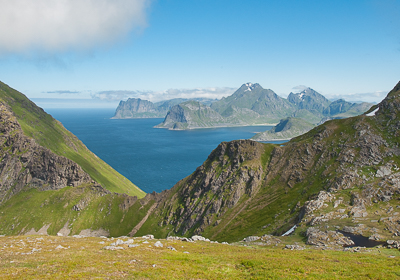
Most people are struck by the rugged wild mountains rising out of the sea when they first reach the the Lofoten Islands that stretch 160 km in a small mountain range from the Island of Hinnoya in the north east to the Skomvaer Lighthouse in the south west.
The mountains of the Lofoten Islands contain the oldest rocks found in northern Europe and contain monzonite, mangerite and gneiss which are extremely erosion-resistant and have been there for over 3 billion years. The most significant changes to the landscapes occurred during the Quaternary period, i.e. from around 2.5 million years ago to the present day. The ice ages are mainly responsible for the current appearance of the landscape that resulted in rugged mountains, isolated peaks, trough-shaped glacier valleys that open into the sea (fjords) and straits that separate the present islands, beaches created from the combined effect of freezing, marine erosion, the abrasive effect of the glaciers and deposits that remained after the glaciers melted.
The Lofoten Islands, which are located to the north of the Arctic Circle, are subject to a harsh climate tempered by relative mildness provided by the Gulf-Stream, as well as unusual conditions of light. In midsummer the sun still shines at midnight and remains above the horizon from 28 May to 14 July. In the winter, on the other hand, the islands are plunged into darkness from 7 December to 5 January.
Rocks, climate and plants…
Jagged mountain ranges that peak at around 1100 m, glacial moraines and lakes, bottoms of valleys covered with peat, alluvial terraces and beaches, rocky coastlines battered by the waves, the nature of the rocks and ground, extremely variable light and quickly changing climatic factors including snow for part of the year, not forgetting the presence of people and their activities, particularly livestock breeding, create a combination of conditions that influence and determine the plants that grow in the Lofoten Islands.
Topography and climate determine the wide variety of natural habitats, and particularly the vegetation. Human activities have relative, sometimes significant, influence on certain environments by modifying their diversity by encouraging certain species over others (grazing land), destroying (deforestation) or adding species that would not have grown naturally in these places, or at least not as quickly. But all indigenous plants are well suited to the environments in which they grow..
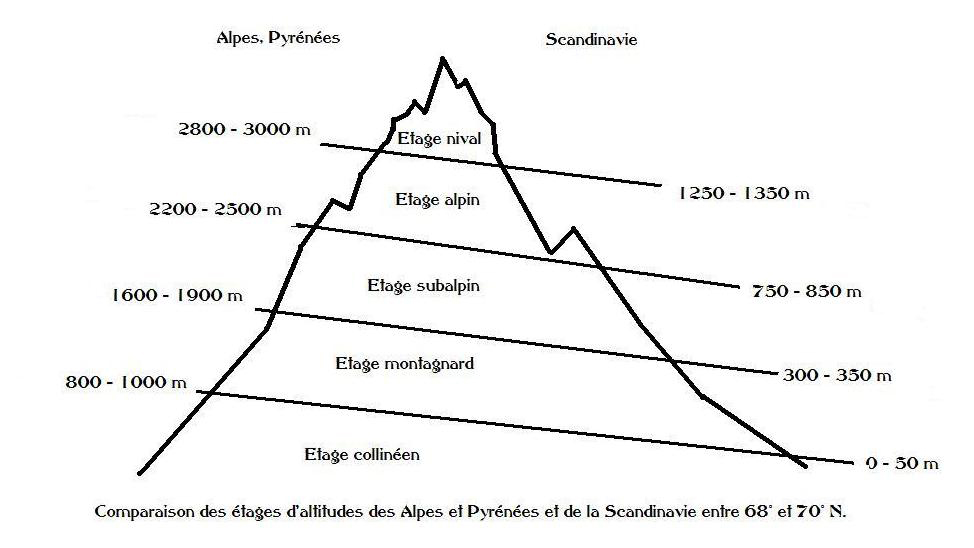 In the Lofoten Islands plants are found that typically grow in high alpine altitudes, particularly on the north- or south-facing rocky slopes and grass. The hard erosion-resistant rocks that do not create deep, rich soil are only suitable for plants that require few nutrients. This is also where the harshest climatic conditions are found that demand the greatest degree of adaptation from plants if they are to survive and reproduce. However, due to the very northerly position of the Lofoten Islands compared to southern Norway and, naturally, to the French Alps and Pyrenees with their very characteristic tiering of vegetation, certain alpine plants grow even on the coast, on the rocky slopes and sandy and marine deposits of the beaches and alluvial terraces, thus mixing unexpectedly with plants whose requirements are totally different.
In the Lofoten Islands plants are found that typically grow in high alpine altitudes, particularly on the north- or south-facing rocky slopes and grass. The hard erosion-resistant rocks that do not create deep, rich soil are only suitable for plants that require few nutrients. This is also where the harshest climatic conditions are found that demand the greatest degree of adaptation from plants if they are to survive and reproduce. However, due to the very northerly position of the Lofoten Islands compared to southern Norway and, naturally, to the French Alps and Pyrenees with their very characteristic tiering of vegetation, certain alpine plants grow even on the coast, on the rocky slopes and sandy and marine deposits of the beaches and alluvial terraces, thus mixing unexpectedly with plants whose requirements are totally different.
Different environments encountered when hiking…
Beaches and marshlands...
Towards the beaches and marshlands the plants have to cope with the sea, sometimes an inlet of water without too many waves such as in the marshes and saline scrubs, or much rougher seas particularly during bad storms on the exposed beaches. They are constantly in and out of seawater. The soil is very salty for the roots. Rapid changes occur in the water levels and therefore in temperature and salinity. For plants that are the furthest away from the sea, in the dunes for example, the parts above ground are subjected to sea mist while the underground parts are soaked in either fresh or salt water. The winds sometimes blow hard and may either uproot the plants or cover them with sand. There are many plants that excrete salt, that have long roots and sometimes a thick cuticle to limit evaporation and salt burn..
Rocky coasts...
The situation is similar on the coastal rocks where seashore rock plants are often covered with seawater. Those that grow higher up that are protected from the seawater are, nevertheless, subject to the wind and salty sea mist. They are often crassulaceous (succulents) with a thick cuticle that grow as low bushes.
Alluvial terraces...
On the alluvial terraces, which is an environment with rich, fertile deep soil, there are many classic seashore, plain, sub-montane and mountain varieties. The wide range of environments and plants, both on the seashore and in the mountains, is one of the most unusual features of Norway and particularly the Lofoten Islands. This is also virtually the only land that people farm and therefore the only place you will find the plants, often annuals, associated with farming.
Wood and forests...
Even though there are few forests in the Lofoten Islands, some deciduous forests still remain here and there, particularly classic birches in the boreal zone. These shady forests with their deep, humid soil are home to other varieties of plants. Conifers such as spruce trees have been replanted and under this virtually permanent shade the soil is poorer and more acidic.
Ponds, lakes and rivers...
In the ponds, lakes and rivers various aquatic plants can be found as soon as you step into the water either with or without a current. The shoreline very often includes damp moss and plants that grow on the banks very close to the water or within the immediate vicinity.
Peatland...
Peatland, which is rich in sphagnum moss that holds water like a sponge, is acidic and poor in nutrients. It is home to plants that are very well adapted to this specific environment, particularly insect-eating plants such as the sundew (drosera), that uses animal protein to compensate for the poorness of the soil.
Heathland...
The heathland is considered alpine, dominated by the shrubs and sub-shrubs of environments with acidic soil that are characteristic of heather and blueberry shrubs, together with lichen, moss and grasses. In the French Alps or Pyrenees these environments are found at altitudes of over 1500 m but, like the grasslands, mountain rocks and valleys, they descend much lower in this boreal zone and sometimes reach the shoreline, which means you can pick blueberries on the beach.
Alpine grasslands...
The alpine grasslands, which are rich in species that are often small and brightly coloured, are generally dominated by grasses. The plants that make up the grassland and its floral diversity depend on which way the mountain slope is facing, whether it is exposed to the sun.
In terms of the grasslands, the snow may remain for a long time and shorten or postpone the flowering time, particularly in the valleys where the snow can stay all summer on certain slopes and in the hollows.
Whether moraines, scree and cliffs...
Whether moraines, scree or cliffs, in the Lofoten Islands you encounter at all altitudes mountain rocks, bare bedrocks or moraine deposits, erratic rocks or rocks of glacial cirques. In the French Alps or Pyrenees they are characteristic of altitude, or high altitude, together with the range of plants that develop there. In comparison, at these latitudes alpine rock plants grow from the sea shore to the peaks, as far up as the permanent snow that can be found here at 1300 m.
Summer fruits
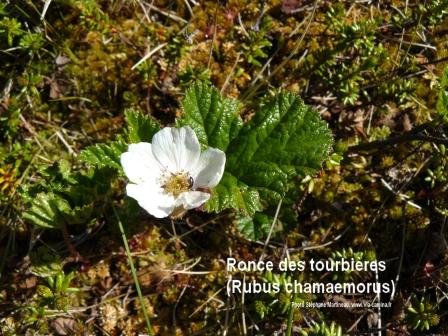 When you hike in the Lofoten Islands you can pick a variety of wild berries such as blueberries, cranberries, blackberries, crowberries and redcurrants, but the star of the show is found in the humid heathlands, a delicious fruit that melts in the mouth called the cloudberry (Rubus chamaemorus). It grows in abundance around the Arctic Circle in the boreal forest area and tundra. The cloudberry is called “chicouté” and “plaquebière” (from “plat de bièvre “ in other words “beaver food”) in Quebec. But in Norway the cloudberry is called “multebaer” or simply “multe”.
When you hike in the Lofoten Islands you can pick a variety of wild berries such as blueberries, cranberries, blackberries, crowberries and redcurrants, but the star of the show is found in the humid heathlands, a delicious fruit that melts in the mouth called the cloudberry (Rubus chamaemorus). It grows in abundance around the Arctic Circle in the boreal forest area and tundra. The cloudberry is called “chicouté” and “plaquebière” (from “plat de bièvre “ in other words “beaver food”) in Quebec. But in Norway the cloudberry is called “multebaer” or simply “multe”.
It is a small hardy perennial that grows quite close to the ground, creeping and slightly velvety, whose stalks do not have thorns. The leaves are simple and rough, kidney shaped, lobed and toothed. From mid-June you may come across the plant in flower, a single white flower measuring approximately 20-30 mm, but you will only find fruit on female plants because this species has different male and female flowers. The edible fruit, which turns orange when it ripens in summer, comprises a cluster of small fleshy spheres (drupelets) similar to blackberries and raspberries. The acidic yet sweet flavour, which is slightly sour, is comparable to that of the lychee.
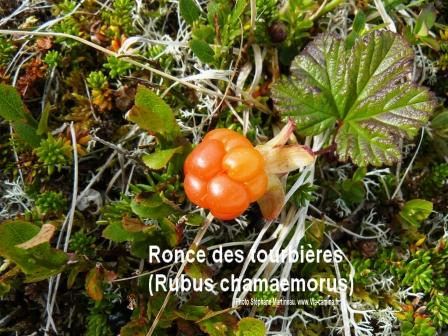 This delicious berry is found in marshlands, heathlands and damp forests, tundra, on acidic peaty soil and, in the Lofoten Islands, virtually at sea level up to around 650 m. Cloudberries are rich in vitamin C and the juice, which is easily preserved, was a remedy against scurvy at sea. Roald Amundsen and his men ate jam made of cloudberries when they conquered the South Pole. It has always been an important wild fruit for families in northern Norway, to the extent that regulations stipulate that it may only be picked by the owners of land where the fruit grows. Cloudberries play a vital part in the economy and a range of varieties are now cultivated. It is still possible to pick them here and there, however, or buy them in small punnets at local markets. They can be eaten as they are, as juice, in tarts, jam, jelly and liqueur.
This delicious berry is found in marshlands, heathlands and damp forests, tundra, on acidic peaty soil and, in the Lofoten Islands, virtually at sea level up to around 650 m. Cloudberries are rich in vitamin C and the juice, which is easily preserved, was a remedy against scurvy at sea. Roald Amundsen and his men ate jam made of cloudberries when they conquered the South Pole. It has always been an important wild fruit for families in northern Norway, to the extent that regulations stipulate that it may only be picked by the owners of land where the fruit grows. Cloudberries play a vital part in the economy and a range of varieties are now cultivated. It is still possible to pick them here and there, however, or buy them in small punnets at local markets. They can be eaten as they are, as juice, in tarts, jam, jelly and liqueur.

Text, diagram and photos Stéphane Martineau, www.via-camina.fr Stéphane Martineau is a mountain guide and biologist by training, but he is above all, a self-taught man and a nature lover. He carries on with his passions in the Pyrenees, where he leads hiking trips and thematic discovery-walks on the natural environment, flora and fauna. He has contributed in various hiking, "nature" and Pyrenean fauna books. He is also the author of several publications on wild edible plants. |
Due to the latitude of 68° north the choice of food products, particularly fruit and vegetables, is limited. Fish is the only food widely available on site.
Wines and spirits are only sold in State shops (Vinmonopol) at prices that seem outrageous compared to other countries. If you want alcohol with your meals you are therefore better off buying from Duty-Free at the airport or in your country. On the other hand, relatively low-alcohol beers are found in all the supermarkets and bars (65 to 70 NOK for a beer in a bar and 25 to 30 NOK in supermarkets). (1 NOK = € 0.13)
For further details on where to shop in the Lofoten Islands and the opening times, go to the « Where to shop » section.
With a GDP per capita of $ 99,316 in 2012, Norway is the country in the world with the third highest standard of living, which also makes it one of the most expensive countries in the world! (GDP per capita in France in 2012: $ 41,151 - 20th in the world). The lowest salaries here are around € 2,500/month so it is pointless to hope to find a bargain. For Europeans (or other foreigners from the "Rich North"), Norway is therefore one of the few countries in the world where we do not have strong purchasing power… The price of services when you arrive (accommodation, transport, activities, catering, etc.) are expensive any cannot under any circumstances be compared to those in other countries, particularly poor countries.
GDP source: International Monetary Fund (IMF)
In order to give you a good idea of the cost of living when you arrive, here are a few examples of prices of services commonly used by travellers (for further details see “Practical Information”)
The prices given here are the averages in 2013. Prices for accommodation other than hotels may be cheaper out of season. These prices are for the high season (from 15 May to 15 August).
| Accommodation (price/night): | Average price Nok | Average price in € * |
| Hotel double room | 1500 NOK | 200 € |
| Rorbu 2 places (small hut) | 800 NOK | 107 € |
| Rorbu 4 places (small hut) | 1200 NOK | 160 € |
| 2 places Homestays | 600 NOK | 80 € |
| 2 person (tent Camping) | 140 NOK | 17,50€ |
* price rounded off, based on the exchange rate on 05/04/13 (€1 = 7.43NOK)
Read more: Average price of services when you arrive
Looking at the prices given in the previous section you may well ask yourself whether it’s at all possible, but provided you follow certain guidelines it’s perfectly feasible.
1) Travel in a group if possible and you will therefore share the travel expenses once you get there. Even though this rule may apply to most destinations, it applies particularly to the Lofoten Islands for the following reasons: the type of accommodation, which consists of cabins for a minimum of two people for which you will be charged the same price if you were on your own. The local transport, which is relatively expensive, not very frequent and not always very practical, will probably encourage you to hire a vehicle which will work out cheaper if there are four of you. Lastly, if you choose a type of accommodation that enables you to do your own cooking you will make considerable savings on the cost of food.
> If you are looking for cheap accommodation in the south of the Lofoten Islands we recommend "Sorvagen sjohus og rorbuer".
2) Travel out of season (before 15 May and after 15 August) and you will get better prices for tourist accommodation. This is not the case, however, in many places and you will have to ask at your accommodation (if possible before you leave). Even though it is unusual to negotiate prices in Norway, the worst that can happen is that you are told “No”. The price of accommodation may, however, be up to 30% cheaper out of season.
3) Go on an organised tour. Provided you are have nothing against this type of travel, Norway is one of the few countries where going on an organised tour (through a specialist hiking agency) is usually cheaper, offering identical services, than travelling alone.
4) Become hunter-gatherers. If you can stand the changeable climate and are properly equipped (see “equipment” section), bear in mind that in the Lofoten Islands, like elsewhere in Norway, wild camping is permitted (see “wild camping” section).
Read more: How to travel in the Lofoten Islands without breaking the bank
To this question I would simply answer, “Because you find everything hikers dream of concentrated in a limited area!”
It is often said that the Lofoten Islands are a miniature Norway, which is true because all the landscapes you find in mainland Norway are within easy reach.
Outstanding landscapes and light. Here you will find immense white-sand beaches, small ports with brightly coloured houses nestling deep in tiny fjords, narrow valleys with a few isolated farms dotted here and there, green or flowery plateaus, mountain lakes, tumultuous waterfalls, breath-taking snow-capped mountains, all bathed in the northern light of which photographers are so fond. The wide range of landscapes, the ever-present sea and mountains as well as the purity of the light are unique in the world.
Fabulous, wide-open nature. Here the only barrier to unrestricted travel is the mountains. As everywhere in Norway, the few, generally quiet inhabitants here are not sticklers about private property. Many hiking trails pass through farms or alongside isolated houses and if you happen to meet someone they are sure to wish you good day and a good trip in Norwegian. The few sheep fences you encounter always have a ladder or gate nearby which you should always close behind you. This total freedom must not make you forget that the natural environment you are passing through is fragile and unused to large mammals like us.
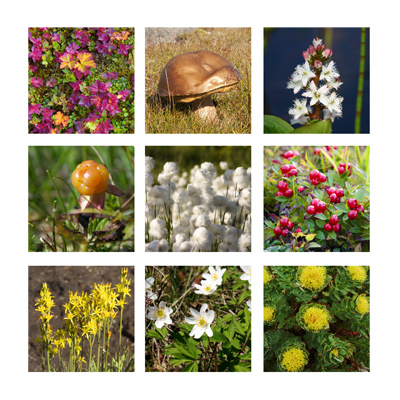 Much of the islands is covered with peat that grows slowly at a rate of 1 mm a year! This fragile biotope means you have to be particularly careful and try to walk on the existing paths wherever possible. Sheep – which are the main inhabitants of the wildest parts of the islands – have created a certain number of tracks but beware, they won’t always take you where you want to go.
Much of the islands is covered with peat that grows slowly at a rate of 1 mm a year! This fragile biotope means you have to be particularly careful and try to walk on the existing paths wherever possible. Sheep – which are the main inhabitants of the wildest parts of the islands – have created a certain number of tracks but beware, they won’t always take you where you want to go.
Read more: Why hike in the Lofoten Islands?
The Lofoten Islands belong to Norway and form an archipelago 300 km to the north of the Arctic Circle. The archipelago extends from the 67th to the 69th parallels and is roughly 150 km long. It is about fifty km west of mainland Norway.
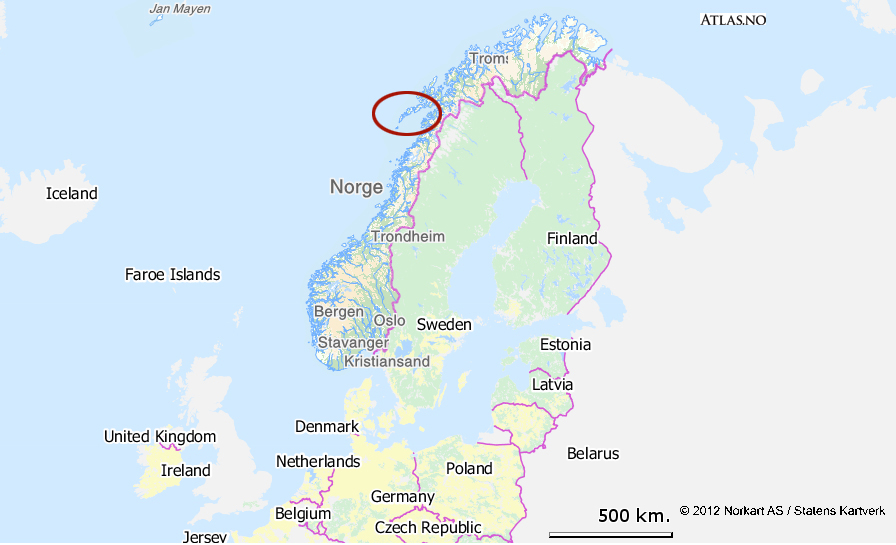
(©norkart AS - Atlas.no)
The archipelago is made up of seven main islands that are permanently inhabited and connected to the mainland by bridges. On the other hand, Værøy and Røstland to the extreme south can only be reached using the regular ferry services.
The archipelago is separated from the Norwegian mainland by Vestfjord, a gigantic fjord (90 km wide at the mouth) which ends in Narvik 300 km further north. The widest part of Vestfjord to the south of the Lofoten Islands resembles an inland sea.
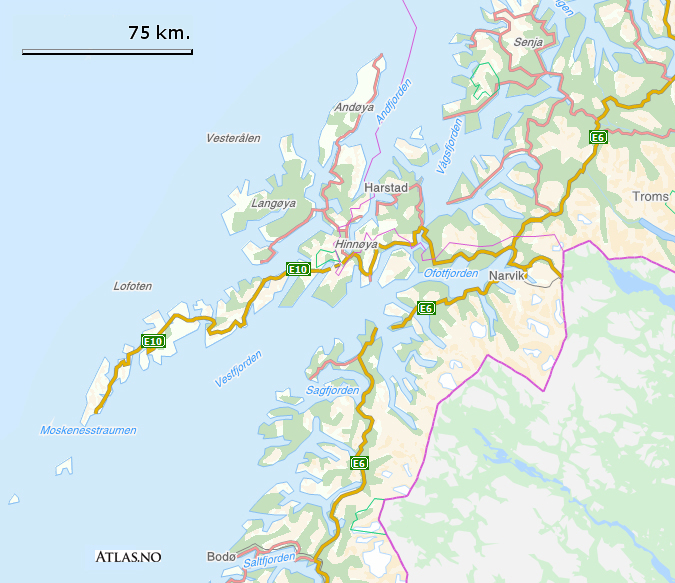 (©norkart AS - Atlas.no)
(©norkart AS - Atlas.no)
Read more: Location
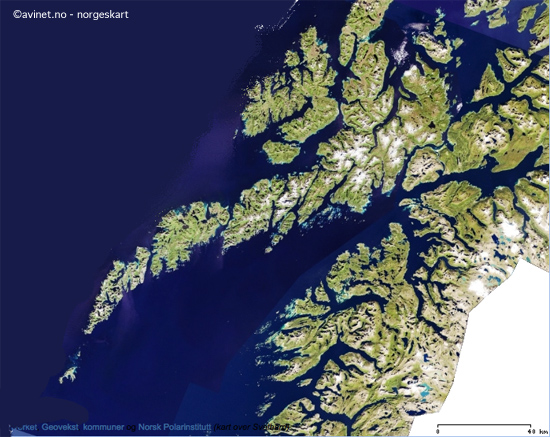 What makes the Lofoten Islands unique is the combination of landscapes and terrains that are not usually found together. Over 80% of the archipelago consists of a mountain range with its jagged peaks.
What makes the Lofoten Islands unique is the combination of landscapes and terrains that are not usually found together. Over 80% of the archipelago consists of a mountain range with its jagged peaks.
The remainder is made up of small plateau areas in the centre and to the north and a narrow coastal strip where most of the population lives. In a single day you can begin hiking on a wide golden-sand beach looking out to the Norwegian Sea then cross mountain pastures inhabited by a few half-wild sheep before finally arriving at steep peaks still partially covered with snow even though it’s mid-August!
This permanent contrast never fails to surprise hikers and leaves no room for monotony. It is often said that the Lofoten Islands are like the Alps with their feet in the sea.
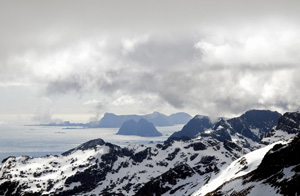 The Lofoten Islands, like the rest of Norway, are made up of terrain that is extremely wild and untamed. But this is also what makes them so attractive. But hiking in such terrain is not without its difficulties! In the north of Norway there are few hikers and therefore few paths which is why most hikes are “off track” on rough scree. The thick covering of vegetation conceals the unevenness of the land. Here more than anywhere you should not judge the difficulty of hikes in terms of steep slopes or distance, but in terms of the nature of the terrain which is comparable to high mountain areas.
The Lofoten Islands, like the rest of Norway, are made up of terrain that is extremely wild and untamed. But this is also what makes them so attractive. But hiking in such terrain is not without its difficulties! In the north of Norway there are few hikers and therefore few paths which is why most hikes are “off track” on rough scree. The thick covering of vegetation conceals the unevenness of the land. Here more than anywhere you should not judge the difficulty of hikes in terms of steep slopes or distance, but in terms of the nature of the terrain which is comparable to high mountain areas.
To ensure that your trip remains pleasant for you and anybody travelling with you, you must not only be in good physical condition but also have experience hiking in mountains over rough terrain. You will be the first to benefit once there.
Read more: Topography
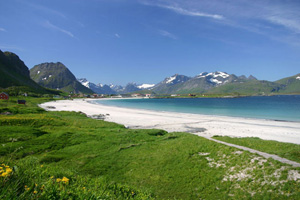
The Lofoten Islands , like a large stretch of the west coast of Norway, enjoy an exceptional climate. At this latitude, without the warm currents of the Gulf Stream the islands would be covered with ice and no vegetation could grow. In fact the warm marine currents from the North Sea give the archipelago a mild oceanic climate with average temperatures in January of 1°C in Røst to the south of the islands (in other words higher than those in mainland France at the same time of year) and cool summers with an average of 13°C in July.
Even though the temperature may occasionally rise to 30°C in July, it is common to have fine days with temperatures of 25°C during the three summer months.
But, attractive as the climate may seem, remember you are in an arctic region near the North Pole and temperatures can drop suddenly, which is why you need appropriate protective clothing (see Equipment).
I would now like to set the record straight regarding certain misconceptions about rain. Having spent every summer in the Lofoten Islands in the last ten years, as well as the ten previous years in the south-west of Norway, I can assert that, contrary to certain rumours, it does not rain constantly in the Lofoten Islands!
Read more: Climate
All you need to know before leaving…
What hike would suit my dog?
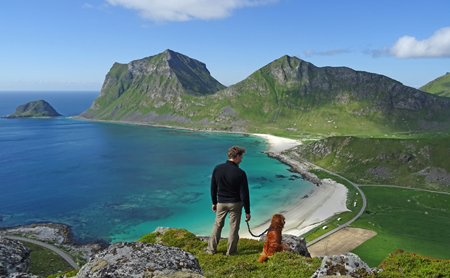 The nature of the terrain itself is difficult in the Lofotens (large screes, boulders, high steps to climb), and makes some of the hikes presented on this website simply not suitable for dogs, despite their training or abilities.
The nature of the terrain itself is difficult in the Lofotens (large screes, boulders, high steps to climb), and makes some of the hikes presented on this website simply not suitable for dogs, despite their training or abilities.
Once you're well advanced on a hike, it’s a bit late to discover that the terrain is too tough for your dog. It is also difficult to know if a dog is really tired or if it is in pain. Courageous and faithful by nature, a dog might push itself to follow you with a "smile", just to make you happy. In order to find out if the slopes are not too steep, or if the distances are not too long for your companion, it is very important to take some time to look at the maps before leaving for a hike.
In order to help you choose the right hikes, we have set up a small symbol* on the day-walk sheets. When you see this symbol, it means that you can bring a sporty and healthy dog along. Note that doing the whole trek "The Great Crossing of the Lofoten Islands" is not suitable for dogs.
* soon online
A lightweight dog (small to medium) will do better in difficult terrain
If your dog is athletic and used to rough terrain, the Lofotens can be a nice playground for it. Some hikes however, will be more like a challenging climbing route, as your dog doesn't have your leg length or a pair of arms to lift itself up in the tricky spots. A small-sized dog (or a medium dog, like a border collie for instance) will be rather an advantage here. They are generally more agile, and as you will probably need to give a helping hand from time to time (carrying your dog), it will be easier for you if it is not too heavy.
Exclude long hikes with a fragile dog or puppy
As always, watch out for dogs with weak joints (e.g. hip problems). Do not embark on a too long or too technically demanding hike (with many screes to cross...). Also, if you have a young puppy, it is not advisable to bring him hiking in a mountainous terrain because it could have adverse repercussions on his growth. If you want to bring your puppy anyway, you'll need a backpack to carry him.
Diseases or other dangers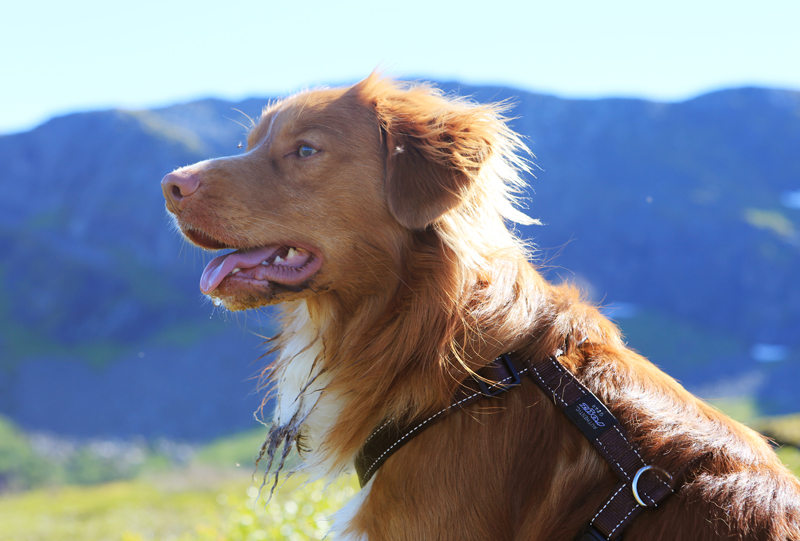
There is no particular disease to be worried about in the Lofotens.
There is no rabies in Norway and almost no ticks, except in the vicinity of sheep pastures, and generally they do not carry any diseases. So just inspect your dog after each hike where you've come across cattle (do not forget a tick twister/removal tool!). The granitic rocks are very abrasive in the long term for the digital pads of the paw (they must be inspected regularly). The water is very acidic in peat bogs and humid soils, and can therefore cause irritation between the dog's pads in the long run. Check this too, especially if your dog starts to bite the underside of its paws ... sometimes until they are bleeding!
> You will find tick removal tools in any local pharmacy (“flåttfjerner” in Norwegian).
Bathing and drinking water
Your companion will be extremely happy in the Lofotens if he loves water and is not chilly, as the sea is ubiquitous. On a hot summer day he will certainly jump into a refreshing lake to cool down. On most hikes, your dog will find lots of freshwater points that are clean enough to drink (streams, lakes), so it is not necessary to load your backpack with tons of water (check on the map if there are accessible water points on the route before leaving for a hike).
> Local supermarkets sell 33 cl bottles with a built-in drinking-trough for dogs; it's very convenient and doesn’t take much space in a backpack. You can refill the bottle during the walk.
Local laws and restrictions
Dogs must be on leash from April 1st to August 20th inclusive. This is indicated by the Norwegian law (“Lov om hundehold”), which is meant to protect farm animals and wildlife. Whatever the time of year, it is essential that your dog stay on a leash wherever there are livestock (sheep, cows...) and in areas where birds nest on the ground, especially during egg-laying (spring). If you forget this, don't worry; Norwegians will not hesitate to call you to order. However, far from homes and livestock, it is not uncommon to meet locals strolling with their unleashed dog. If your dog does not have a strong hunting instinct, it is common sense that matters. When you decide to let your dog walk free (I repeat, away from houses and sheep!), he must remain under your absolute control and come back to you at first call. This is to be taken very seriously, as there are cases in Norway every year of dogs shot by the authorities, or by the farmers themselves, following an "attack" or suspicion of attack on sheep (or similar behavior from dogs). Some local farmers will not hesitate to threaten you physically if your dog is not on a leash when you cross a pasture area (this really happened!). Another obligation: you must - of course - pick up dog leavings, and even if it is in the middle of the wilderness (yes, that’s true). There again, locals will not fail to remind you if you "forget" to do so.
How to cross the Norwegian border with a dog
Before crossing the border (a few weeks before your trip), check that all documents are in order (European pet passport, chip, vaccines, compulsory deworming treatment against echinococcosis, etc.). Whether you arrive by plane or car, you have the obligation to declare your pet to customs when entering the country. They will check the passport and check if your dog's got the compulsory deworming treatment before entering the Norwegian territory (and that this has been done within the legal deadlines).
> To learn more about pet entry requirements, please visit the following page: mattilsynet.no
Taking the ferry with your dog?
For ferry crossings between Bodø and Moskenes (3 hrs 20 min), your dog will have to wait in the car (note that the car deck is not accessible during the crossing). If you are travelling on foot, your four-legged friend will have to stay in a special compartment at the bottom of the boat - near the engines - where it is very noisy (this means in fact: very SCARY for most dogs). There you will find some stainless-steel cages and water. You'll be able to visit your dog during the crossing at least once, on request, or you can stay at its side. Bring a blanket for the cage!
Accommodations:
Most accommodation accepts dogs, but you should check this beforehand and you'll usually have to pay an extra cleaning fee.
Vets in Lofotens
In case of minor or major concern, know that there is a veterinary center in Leknes (https://www.facebook.com/lovetsenter.no/ +47 76 08 29 99) and another in Svolvær (http: //www.lofotendyreklinikk.no/ +47 76 07 16 17).
Travelers’ feedback
Health rules in public areas (cafes, restaurants, shops, etc.) are as strict as they can get towards dogs (except for guide dogs and police dogs) and the fear of allergies - however rare they may be - is close to hysteria in my view.
Unlike many European countries, you will not be able to bring your dog with you while shopping (it's forbidden, and not only in food stores!). You will not be able to drink a coffee inside either. Your four-legged friend will be confined to stay in the car or tied to a pole in the street when you've got things to do in town.
Note that it is also complicated to take the bus with a dog, even if some drivers kindly accept it (on request of course, and if there are no passengers opposed to it).
Although there is a growing craze for dogs in the bigger Norwegian cities (one can even speak of a real trend), they are relatively rare in the Lofoten Islands. Because there are not many of them, and even if they are generally obedient, they are rarely socialized and will often be afraid of your own companion, to which they will respond with surprising aggressiveness. Moreover, fearing drama in the case of a "dog encounter", the locals will keep their fuming and barking hounds on a short leash and may easily make a detour of 50 m or more just to avoid you.
Finally and without wanting to generalize, negative reactions towards you and your dog might surprise you (suspicious looks, sometimes even disgusted looks), especially if you come from the Netherlands, the US, Germany, Belgium or the United Kingdom - where dogs are respected, and have their place next to humans, whether it is in town or elsewhere. This will hopefully change in the future, but slowly, because animal welfare is not a great concern yet and the Norwegian law does still not recognize the sentient nature of animals.
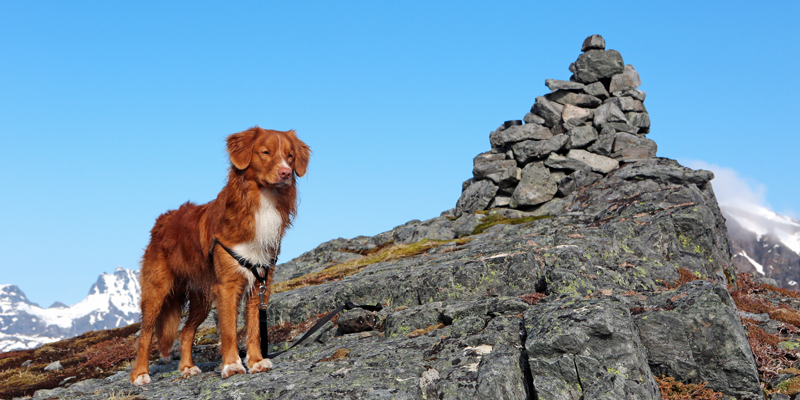
Text and photos by Magdalena (H.-L.)
BY BUS:
Buses are high quality but not very frequent (on average 2 each day in both directions) and relatively expensive*. Including stops and changes of bus it takes half a day to travel the 150 km between Svolvaer and A i Lofoten** .
To find out the times.
*Example: 158Nok/person from Moskenes to Svolvaer, count 3hrs to 3:30hrs travel time (depending on connections in Leknes).
**to find out how to read the time tables, please refer to the timetables in : "How to get to the Lofoten Islands"
BY CAR:
Undoubtedly the most practical if you want to be independent. If you don’t have your own car you can hire one when you get there. In the high season (July and early August) it is, however, sometimes difficult to find rental vehicles available. The local Exploranor agency can provide hire cars and book your accommodation using the liberty forms.
THE "BOAT-TAXI" FROM REINE TO VINSTAD/KJERKFJORD:
To reach the end of the Reine fjord in order to explore the beach in Bunnes or hike to the Horseidet beach or Selfjorden you need to take this small boat from the centre of Reine. There are lots of people in summer, however, and you must get to the landing dock at least 30-45 minutes ahead of time. The boat leaves as soon as it is full (it doesn’t always wait until the scheduled time and may depend on the mood of the captain, which varies depending on the cycle of the moon :-)). Prices available here.
Winter (901) 01.09.14 until 15.06.15 (week 36 to 24 next year)
Departure from Reine
| Mon. | Wed. | Thu. | Fri. | Fri. | Every day *) |
From Reine | 07.00 | 11.00 | 10.00 | 08.00 | 21.30 | 15.00 |
Rostad | - | - | - | - | - | - |
From Kjerkfjorden | 07.15 | 11.15 | 10.15 | 08.15 | - | 15.15 |
From Vindstad | 07.25 | 11.25 | 10.25 | 08.25 | - | 15.25 |
Towards Reine | 08.00 | 12.00 | 11.00 | 09.00 | 22.30 | 16.00 |
*) Sunday, departure every other week (weeks of an even number: 34-36 etc.)
Times (901) from 16.06.14 to 22.06.14 and from 18.08.14 to 31.08.14 (week 25, 34 and 35)
Departure from Reine
| | Mon. | Wed./Sat. and Sun.
| Tue.-Thu. | Fri. | Fri. | Every day *) |
| From Reine | 07.00 | 11.00 | 10.00 | 08.00 | 21.30 | 15.00 |
| Rostad | - | - | - | - | - | - |
| From Kjerkfjorden | 07.15 | 11.15 | 10.15 | 08.15 | - | 15.15 |
| From Vindstad | 07.25 | 11.25 | 10.25 | 08.25 | - | 15.25 |
Towards Reine
| 08.00 | 12.00 | 11.00 | 09.00 | 22.30 | 16.00 |
*) Sunday, departure every other week (weeks of an even number: 34-36 etc.)
Times (901) from 23.06.14 to 17.08.14 (from week 26 to 33)
From Reine
| | Mon. and Fri.
| From Mon. to Fri.
| Sat. and Sun.
| Fri. | Every day
|
| From Reine | 08.00 | 10.00 | 11.00 | 21.30 | 15.00 |
| From Vindstad | 08.15 | 10.15 | 11.15 | - | 15.30 |
| From Kjerkfjorden | 08.25 | 10.20 | 11.20 | - | 15.20 |
| Rostad | - | - | - | - | - |
Towards Reine
| 09.00 | 11.00 | 12.00 | 22.30 | 16.00 |
Here is an overview of how to get to and from the Lofoten Islands. This paragraph contains direct links to the official sites of transport companies. To help you read the timetables, please refer to the box below (How to read timetables in Norway).
THE SIMPLEST WAY
By plane
1) Flight Paris (or other city)-Oslo: with SAS or Norwegian (low-cost Norwegian airline)
2) Flight Oslo-Bodø: with SAS or Norwegian (low-cost Norwegian airline).
N.B. If you choose Norwegian, make sure you will not have to spend the night in Oslo (airport) because there might be no connections between Paris (or an other city)-Oslo and Oslo-Bodø flights in the same day with this company (you will have to allow for a night in a hotel as well). Check carefully before booking.
Read more: How to get to the Lofoten Islands ?
Always remember this Norwegian proverb “There’s no such thing as bad weather, only bad clothes”. Unlike the inhabitants of the islands you will only be here for a short time. You won’t have time to wait for ideal rainfall, wind and temperature conditions before you leave your tent or Rorbu, so make sure you are properly equipped when you leave.
Equipment for all seasons:
Vital equipment
Fleece jacket
Wind/waterproof jacket (rain capes are impractical due to the terrain)
Warm underwear – Long-sleeved T-shirt + long-johns (ideally merino wool)
Hiking socks (warm)
Woollen hat
Gloves
Sunglasses
Hiking trousers
Woollen jumper
Quick-dry underwear (not cotton while hiking)
Walking shoes (waterproof if possible)
The rest
Handheld GPS
Umbrella
Water bottle or thermos flask
Knife
Walking poles (even if you are not used to using them, the terrain here is perfect for Nordic walking)
Sunscreen
Bathing suit (you never know)
Quick-drying towel
Small first-aid kit (everything is available here but more expensive than in France)
Mobile phone
Plus everything you usually take with you…
| Mosquitos: unlike the north of the Norwegian mainland, there are few mosquitos or stinging insects in the Lofoten Islands. Although, the last years we have notice some midges and other mosquitos in the evening in july and august. |
Winter equipment
Vital equipment
In addition to the all season equipment you should take:
A pair of snow shoes (if you want to leave the road)
A warm quilted jacket
A pair of under-gloves + a pair of warm gloves
A cagoule
Woollen underwear, socks and hat.
A head lamp
A pair of warm walking shoes suitable for your snow shoe fastenings.
The rest
Handheld GPS
Thermos flask
Knife
Walking poles
Sunscreen
Bathing suit (for the sauna, or the bravest of you!)
Quick-dry towel
Small first-aid kit (everything is available here but more expensive than in France)
Mobile phone
Plus everything you usually take with you…
| NB : Make the most of your rucksack to ensure you don’t overfill it. Remember you will find everything when you get there (in case you’ve forgotten anything) but that it’s more expensive than in France. Lastly, do not underestimate the cold that may come in any season at this latitude. My personal experience is that wool (particularly merino) is the best material ever invented in terms of warmth and comfort. |
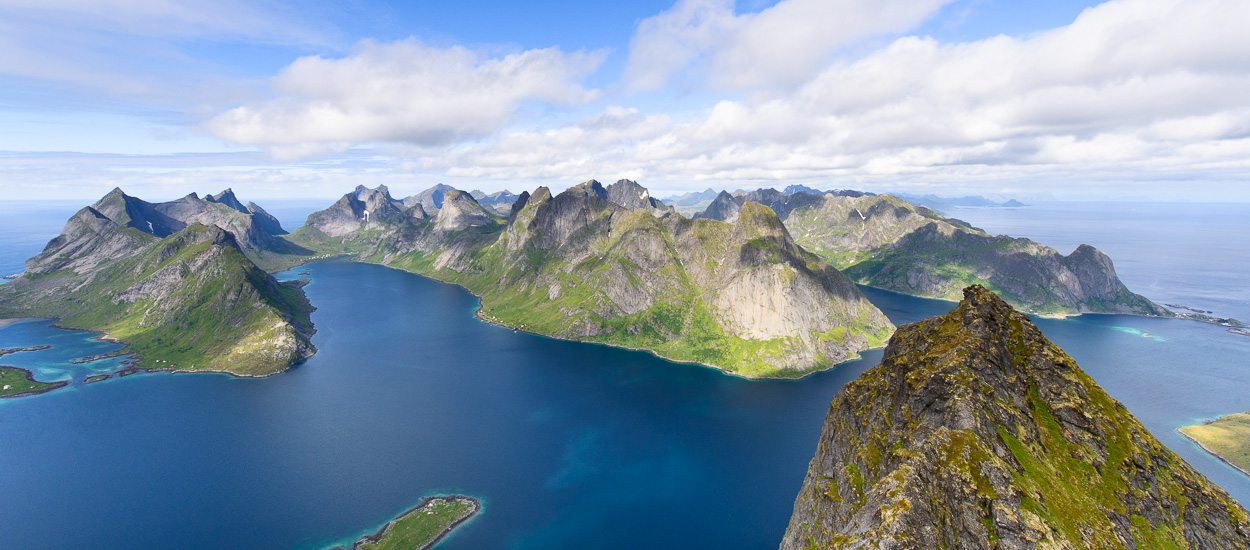



 I discovered Norway when I was about ten years old. When I was young each main school holiday was the occasion for my family to roam Europe in a Volkswagen Camper, stopping anywhere that took our fancy in interesting places that we often discovered on foot. When I arrived in Norway, even though it was not my first trip abroad I still remember the impression it made on me!
I discovered Norway when I was about ten years old. When I was young each main school holiday was the occasion for my family to roam Europe in a Volkswagen Camper, stopping anywhere that took our fancy in interesting places that we often discovered on foot. When I arrived in Norway, even though it was not my first trip abroad I still remember the impression it made on me!

 Even though you may love being alone and be in good physical shape, and there is no risk of being kidnapped and held for ransom here, the nature of the terrain, unpredictable weather and limited number of hikers may have dramatic consequences in the event of an accident, however minor (twisted ankle, a fall, etc.). Mobile phones can’t always find a signal and the nights can be cold and damp even in July…
Even though you may love being alone and be in good physical shape, and there is no risk of being kidnapped and held for ransom here, the nature of the terrain, unpredictable weather and limited number of hikers may have dramatic consequences in the event of an accident, however minor (twisted ankle, a fall, etc.). Mobile phones can’t always find a signal and the nights can be cold and damp even in July…



 This delicious berry is found in marshlands, heathlands and damp forests, tundra, on acidic peaty soil and, in the Lofoten Islands, virtually at sea level up to around 650 m. Cloudberries are rich in vitamin C and the juice, which is easily preserved, was a remedy against scurvy at sea. Roald Amundsen and his men ate jam made of cloudberries when they conquered the South Pole. It has always been an important wild fruit for families in northern Norway, to the extent that regulations stipulate that it may only be picked by the owners of land where the fruit grows. Cloudberries play a vital part in the economy and a range of varieties are now cultivated. It is still possible to pick them here and there, however, or buy them in small punnets at local markets. They can be eaten as they are, as juice, in tarts, jam, jelly and liqueur.
This delicious berry is found in marshlands, heathlands and damp forests, tundra, on acidic peaty soil and, in the Lofoten Islands, virtually at sea level up to around 650 m. Cloudberries are rich in vitamin C and the juice, which is easily preserved, was a remedy against scurvy at sea. Roald Amundsen and his men ate jam made of cloudberries when they conquered the South Pole. It has always been an important wild fruit for families in northern Norway, to the extent that regulations stipulate that it may only be picked by the owners of land where the fruit grows. Cloudberries play a vital part in the economy and a range of varieties are now cultivated. It is still possible to pick them here and there, however, or buy them in small punnets at local markets. They can be eaten as they are, as juice, in tarts, jam, jelly and liqueur.
 Much of the islands is covered with peat that grows slowly at a rate of 1 mm a year! This fragile biotope means you have to be particularly careful and try to walk on the existing paths wherever possible. Sheep – which are the main inhabitants of the wildest parts of the islands – have created a certain number of tracks but beware, they won’t always take you where you want to go.
Much of the islands is covered with peat that grows slowly at a rate of 1 mm a year! This fragile biotope means you have to be particularly careful and try to walk on the existing paths wherever possible. Sheep – which are the main inhabitants of the wildest parts of the islands – have created a certain number of tracks but beware, they won’t always take you where you want to go.

 What makes the Lofoten Islands unique is the combination of landscapes and terrains that are not usually found together. Over 80% of the archipelago consists of a mountain range with its jagged peaks.
What makes the Lofoten Islands unique is the combination of landscapes and terrains that are not usually found together. Over 80% of the archipelago consists of a mountain range with its jagged peaks. The Lofoten Islands, like the rest of Norway, are made up of terrain that is extremely wild and untamed. But this is also what makes them so attractive. But hiking in such terrain is not without its difficulties! In the north of Norway there are few hikers and therefore few paths which is why most hikes are “off track” on rough scree. The thick covering of vegetation conceals the unevenness of the land. Here more than anywhere you should not judge the difficulty of hikes in terms of steep slopes or distance, but in terms of the nature of the terrain which is comparable to high mountain areas.
The Lofoten Islands, like the rest of Norway, are made up of terrain that is extremely wild and untamed. But this is also what makes them so attractive. But hiking in such terrain is not without its difficulties! In the north of Norway there are few hikers and therefore few paths which is why most hikes are “off track” on rough scree. The thick covering of vegetation conceals the unevenness of the land. Here more than anywhere you should not judge the difficulty of hikes in terms of steep slopes or distance, but in terms of the nature of the terrain which is comparable to high mountain areas.
 The nature of the terrain itself is difficult in the Lofotens (large screes, boulders, high steps to climb), and makes some of the hikes presented on this website simply not suitable for dogs, despite their training or abilities.
The nature of the terrain itself is difficult in the Lofotens (large screes, boulders, high steps to climb), and makes some of the hikes presented on this website simply not suitable for dogs, despite their training or abilities.


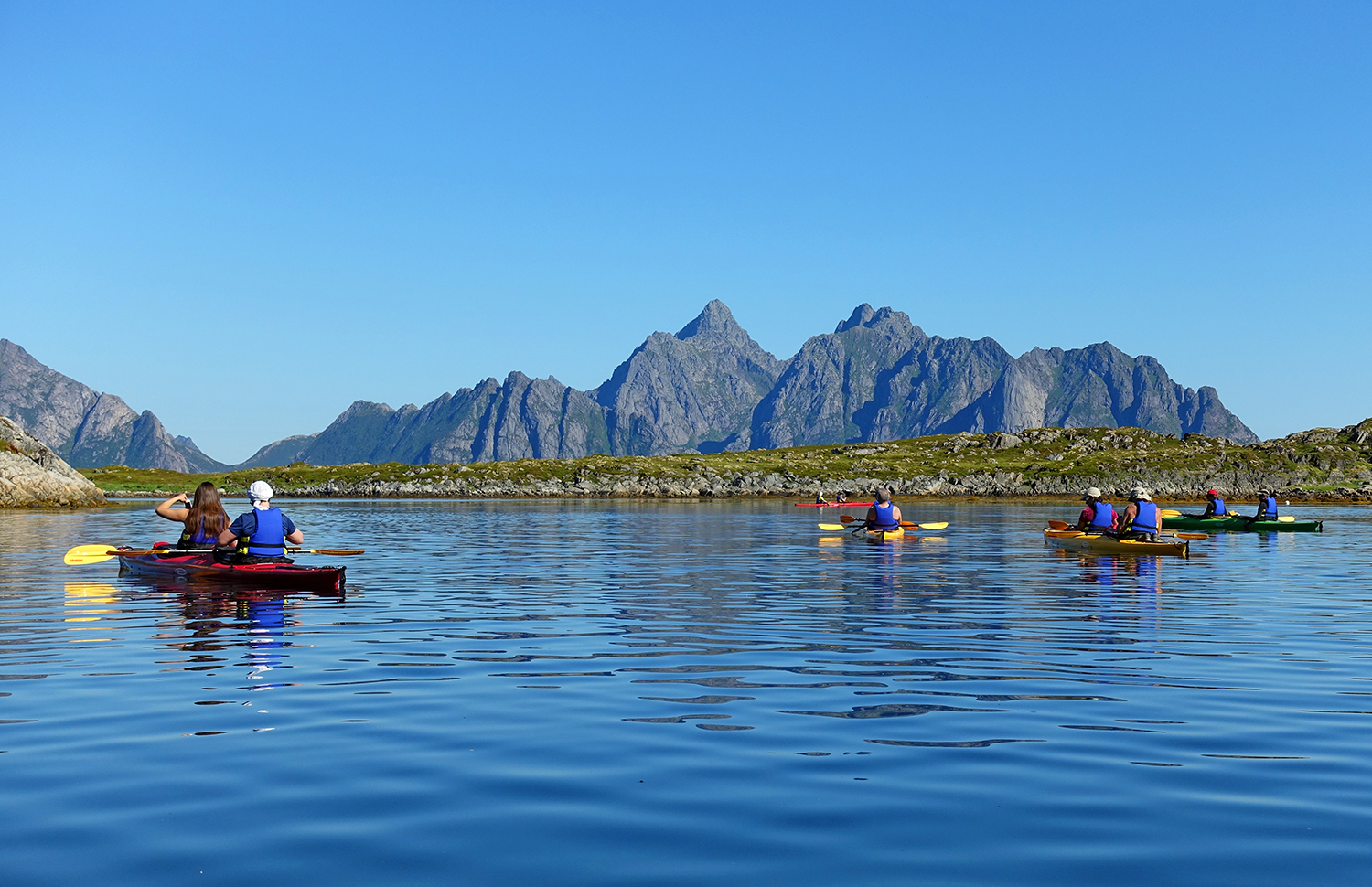
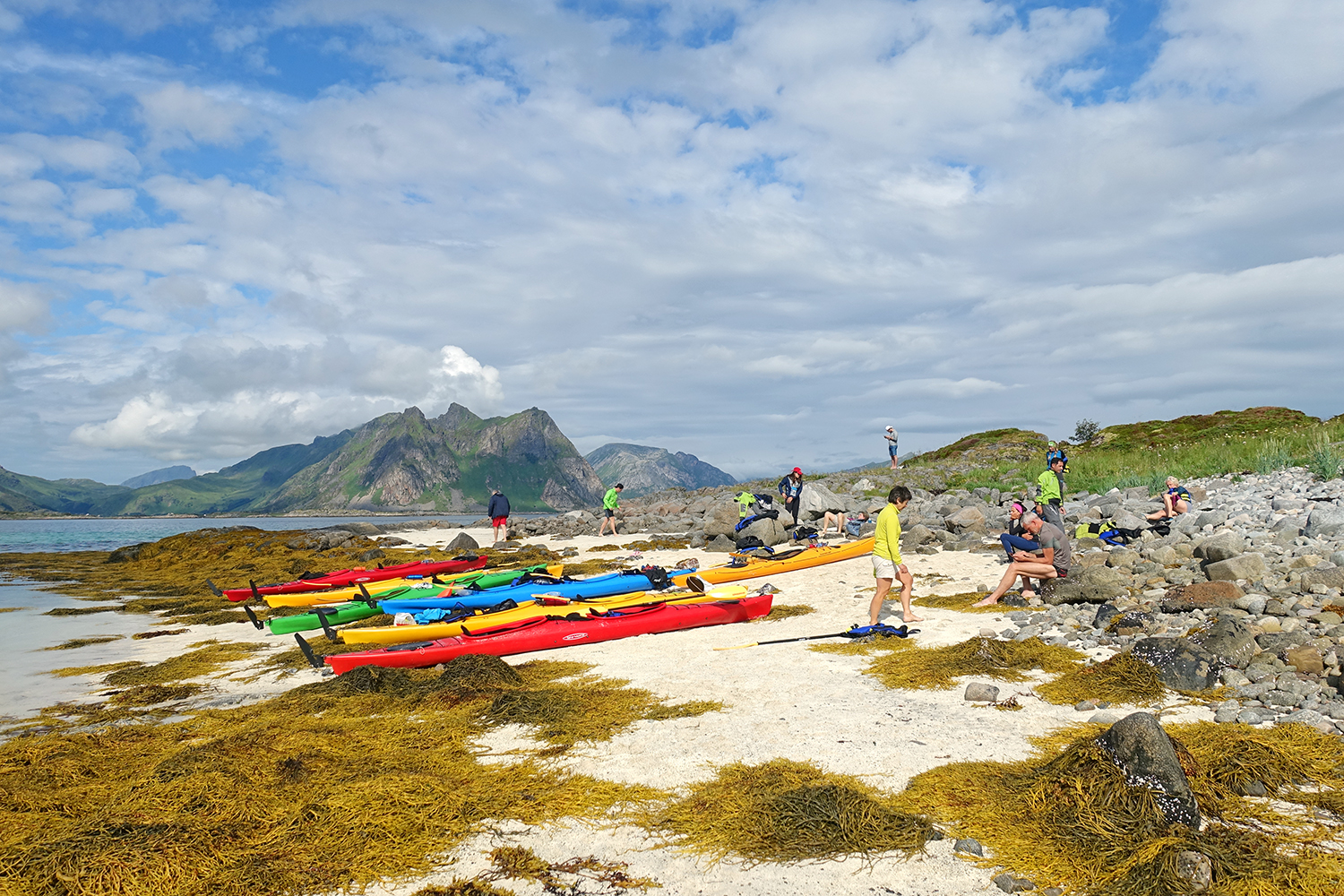
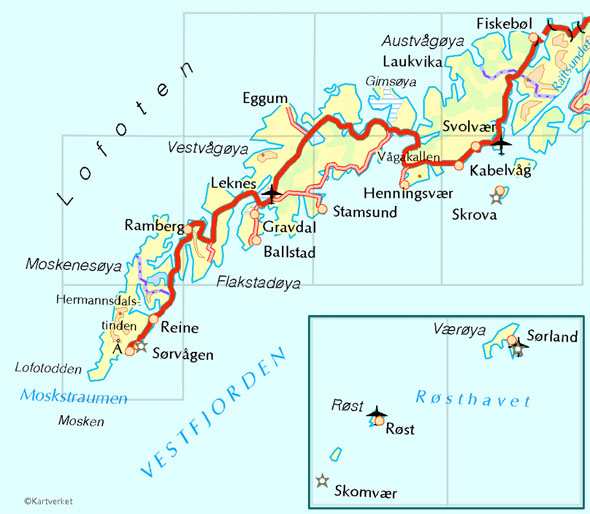
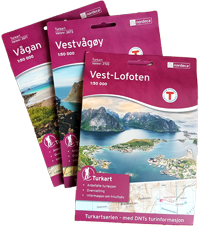 Hiking maps (paper)
Hiking maps (paper)